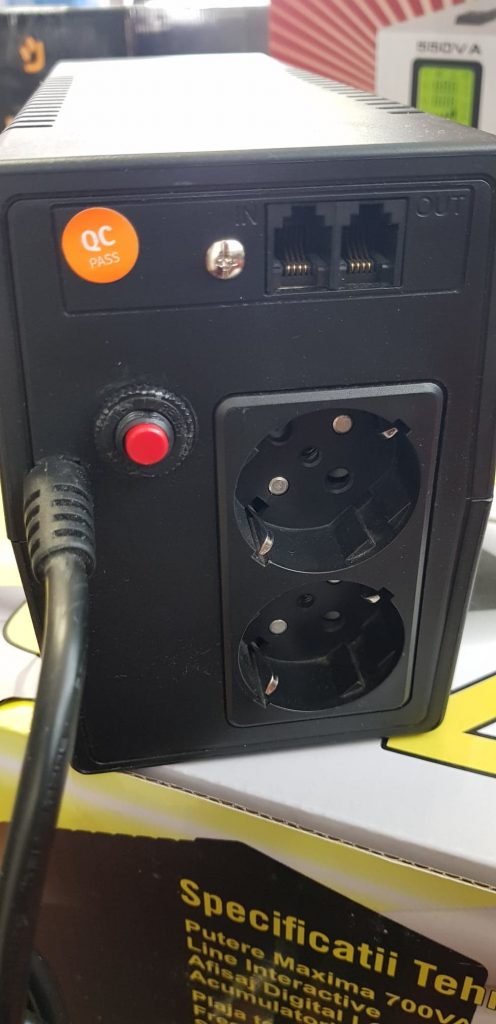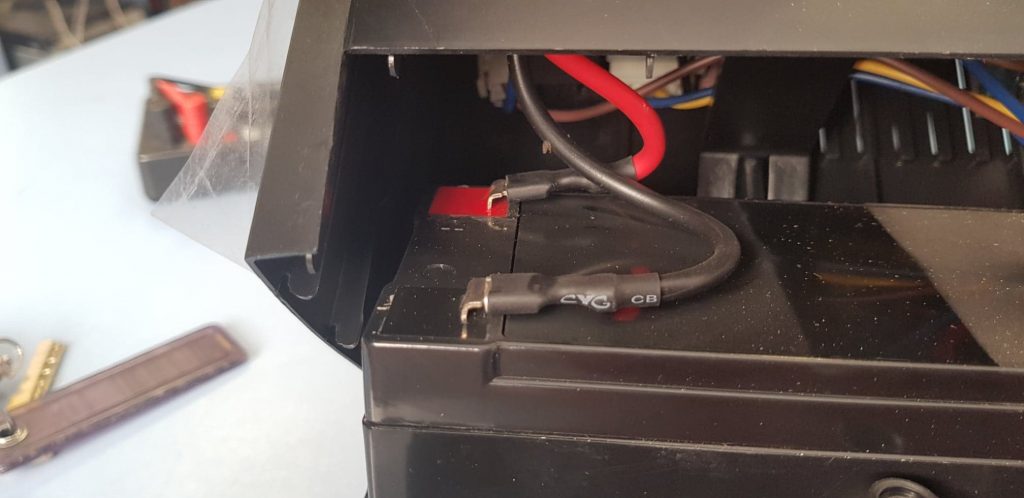Why is uninterruptible power supply so important?

An uninterruptible power supply (also called UPS) is a very complex unit that is used for protecting certain devices from power spikes, power outages, while also offering backup capabilities, a backup battery in our case. The backup battery can keep supplying any device connected to the UPS with constant 220V for about 15 – 20 minutes, depending on the battery amper capacity or UPS power. You can think of UPS as being the “guardian angel” of the electrical devices.
Line-interactive UPS have an AVR function that helps regulates electricity, bringing it to a constant voltage that the electrical devices require. I will talk more about that further in the article.
Do you want to know more about why it’s critical to have every electronic device connected to an uninterruptible power supply? Read on.
MY OPINION ON WHY IT’S CRITICAL TO HAVE UPS INSTALLED EVERYWHERE
As a security system installer, I learned that it’s critical to install uninterruptible power supply unit for every surveillance system or alarm system. Most security systems internal circuits work with small currents such as 12V or 24V. Because the systems themselves use 220V input to power up, if the current isn’t regulated properly, a small spike could eventually burn the internal circuits from all the electrical power excess. HDD’s are also incredibly sensible! Why do you think PC’s have always been so sensitive to power spikes/outages?
My boss doesn’t even give a warranty for any part of a security system the client might buy. Because he knows that, in the case of a malfunction, the main reason would be improperly usage of the devices.
Most uninterruptible power supplies are not recommended for weld equipment or air conditioners unless you are using over 2 – 3 kVA dynamic UPS units. I literally saw one UPS burn in front of my eyes because of this.
FEATURES OF AN UPS
- When AVR is included with the UPS – the effective voltage range is so important.
Let’s say we got a specific UPS to range from 145V to 290V and the input constant voltage from the main power is 230V.
If the input voltage power goes below 230V, the AVR will compensate that lost voltage to keep the devices working. It can go as low as 145V before the uninterruptible power supply switches to battery backup mode.
In the same order, if the input voltage goes above 230V, the AVR will get rid of that excess electricity, offering constant 230V. It can go as up as 290V. After it exceeds the threshold, it may automatically cut off all electricity to avoid an overcharge. Almost all UPS units have fuses installed that get destroyed in case of an overchange, but keeping the UPS itself and the other devices safe.
- Time duration after the power cut off
Depends from device to device, most of them allow about 15 – 20 minutes. Depends if the battery is still functioning properly and is not undercharged. Make sure to change batteries every 2 years or so.
- Schuko plugs or country determined plug – The more there are, the better.

- Most new UPS have LCD screens
It’s showing essential information about:
- INPUT VOLTAGE
- OUTPUT VOLTAGE
- BATTERY MODE OR AC MODE
- Multiple batteries can be installed if the uninterruptible power supply allows it.
The disadvantage of the uninterruptible power supply unit is that it’s not resistant to low temperatures and bad weather such as snow, rain etc.
Since i bought for myself, [i posted on this page everything related to my rig] every morning, the UPS takes on power spikes that otherwise goes to the pc and that is very dangerous. I spent about 1100 euros on my rig and it would be sad if power spikes would rip it apart. This is the main reason i bought an UPS.
For example, in my country, if i live in the country side, there can be massive power outages. This is because my country is a 3rd world country and not so highly developed. It happens so frequently because the electrical infrastructure is old and sometimes can go rogue mode.
TYPES OF UPS
There are three types of UPS.
- Offline/Standby – Basic power backup (but lacks AVR function);
- LINE INTERACTIVE – has backup capacity + AVR function (some have an auto-restart function);
- Online/True DOUBLE CONVERSION (the ultimate UPS device);
Most UPS below 1000VA are Line-interactive or Offline/Standby and are used for smaller equipment devices.
So far, I worked with: 3100VA, 1400VA, 1100VA, 900VA, 700VA, 650VA. To find out the real effective power of your UPS in Watts, use this calculator. Take into consideration the power factor when measuring real power. According to them:
\(P_{W} = S _{VA}\times PF \)
These designs I created explain better each type of UPS and how they work:
BATTERY
Batteries work with 12V specifically for these types of UPS. There are three types of batteries that I read on Eaton’s official website.
The lifespan of a battery 2-4 years. After that period, the effectiveness decreases by 100%. Some uninterruptible power supplies don’t even work without a constant 12V.
After opening up an UPS, test the battery with a voltmeter to see if the battery is still effective.
When changing a UPS battery (example 12V, 9A), make sure that you replace it with a battery of similar ampere value (example 12V, 9A) or higher. Never go lower than it’s the standard value (example 7A) because it can overheat or get bloated.
Also, the terminals might be smaller or larger. If that is the case, fix it as shown in figure {A}.
WHAT IS THE PRICE OF AN UPS
Volt-Ampere factor and the type of UPS determines the price of
a UPS usually. For less than 1kVA UPS, their price might not be that high though.
But as I would say, price is irrelevant in this case as UPS are very important for electrical devices.










Voice of the people